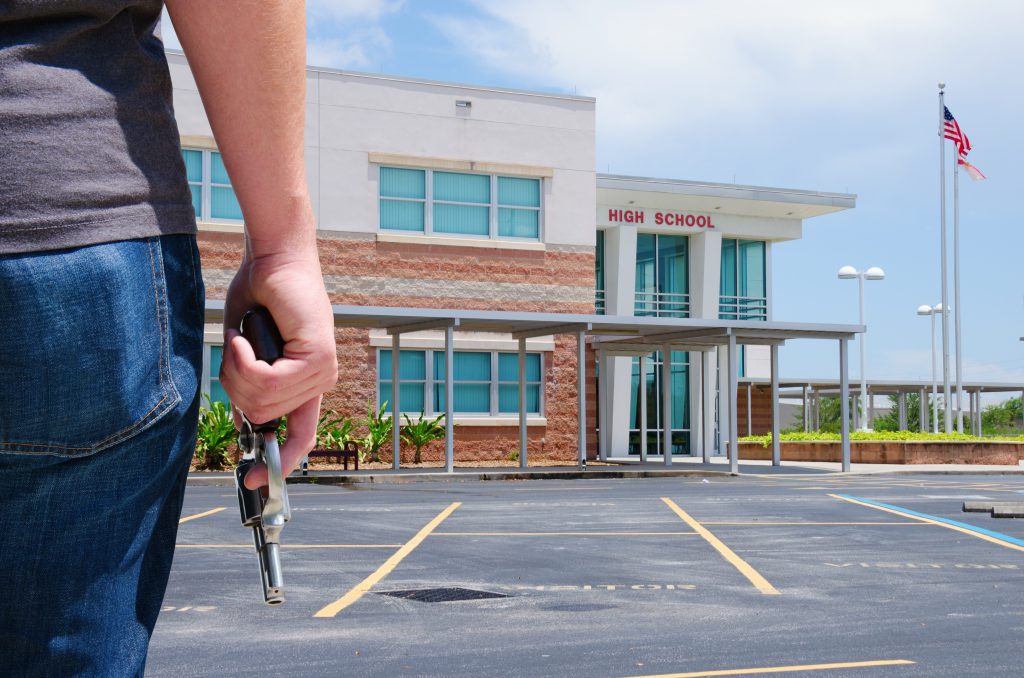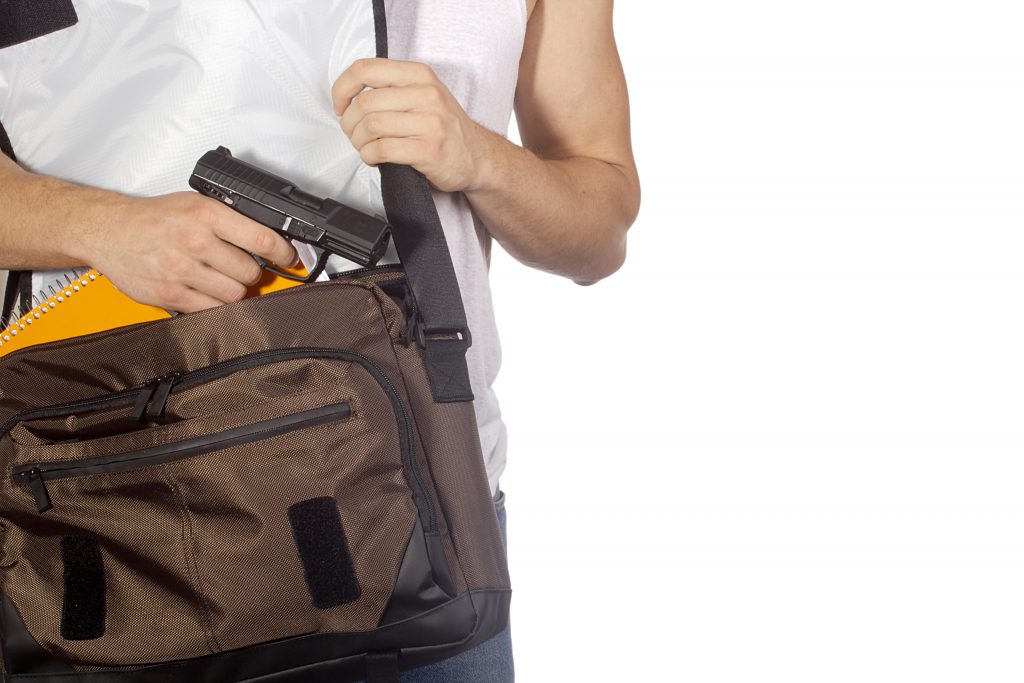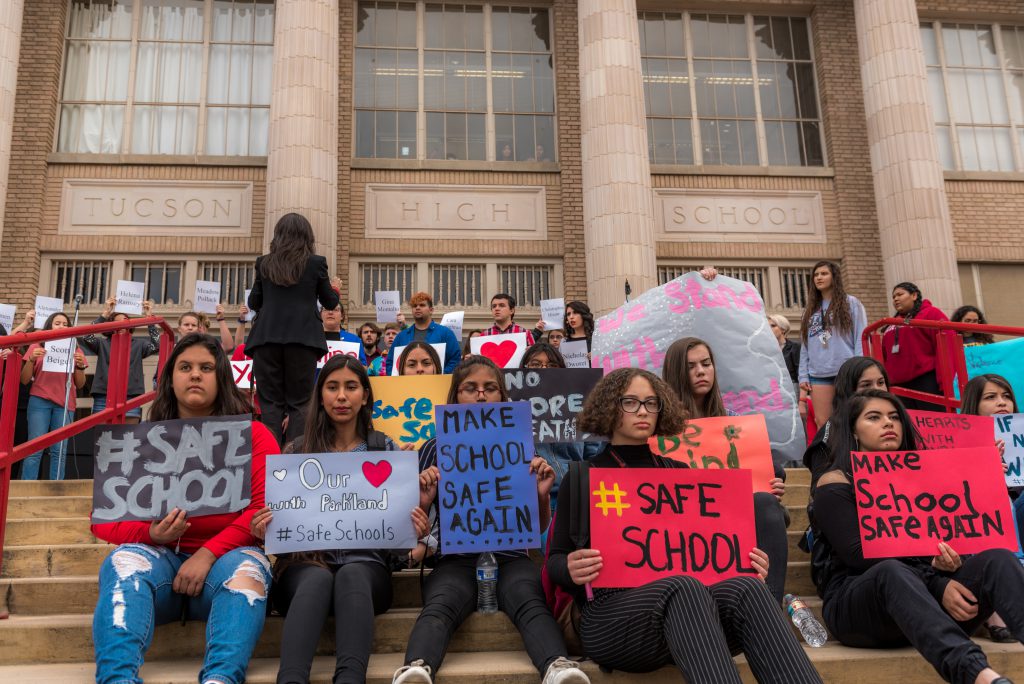The expression ‘school shooting’ is commonly used to define acts of violence committed with the use of firearms by students or former students, but also by external persons, inside a school.
For almost a century there have been numerous schools around the world that have been the setting for mass killings with dozens of victims being children. The United States has the highest number of assaults with firearms in schools, and is consequently the country where the debate surrounding weapons and safety in the classroom has become increasingly heated. However, the number of victims is also very high in other countries such as Japan, Germany, Finland and Russia.

Brief history of school shootings around the world
Michigan, 1927
Three bombs exploded on May 18 at a school in the village of Bath, causing the highest number of victims in the history of American school massacres: Forty-five people died in the attack, most of them being children. The perpetrator of the massacre was the previous “treasurer” of the school, who died in the attack. He is said to have been driven to the act by economic problems due to a tax imposed by the school on the community. (NPR, 2021)
Scotland – Colorado, the 90s
In 1996, it was the turn of the Dunblane school massacre in Scotland. On March 13 of that year, an armed man entered the town’s elementary school and shot dead sixteen children between the ages of five and six, as well as their teacher. Accused in the past of pedophilia, the author wanted revenge on society and, after completing the massacre, committed suicide. (Britannica, 2000)
Three years later, on April 20, 1999, back in the United States, thirteen students and teachers at the Columbine High School, in Colorado, were killed in a shootout. The perpetrators were two students aged seventeen and eighteen who entered the building armed and opened fire on fellow students and teachers. The two young men proceeded to then take their own lives. (Britannica, 2010)
Japan – Germany, 2000-2001
The new millennium followed the path of bloodshed traced in the previous years and massacres continued all over the world. In 2001, in Japan, a man suffering from schizophrenia stabbed eight children to death in an elementary school in Ikeda, near Osaka. (The Guardian, 2001)
The following year in Erfurt, Germany, a nineteen-year-old boy committed a massacre in his high school. Flunking out twice and recently expelled, he disguised himself as a ninja, armed himself with a gun, and killed eighteen people, fourteen of whom were teachers, before ultimately committing suicide. (The Guardian, 2002)
North Ossetia, 2004
Year 2004 was also the year of a massacre in Beslan, in North Ossetia, an autonomous republic of the Russian Federation. Thirty-two terrorists, Islamic fundamentalists and Chechen separatists, entered a school on September 1, kidnapping 1200 adults and children. Three days later, special forces raided the institution: a move that resulted in the massacre of 334 people, including 186 children, who died during the operation. In 2017, the European Court condemned Moscow’s security forces because they “contributed to causing casualties among the hostages.” (CNN World, 2020)
Finland, 2007
In 2007, in Finland, an eighteen -year old student opened fire in the high school he was enrolled in, in Tuusula, near Helsinki, killing seven of his classmates as well as the principal of the institute, after which he shot himself. (New York Times, 2007)
Germany – Azerbaijan, 2009
In 2009, in Winnendem, Germany, a seventeen-year-old killed fifteen people at his former school before committing suicide. (New York Times, 2009)This was followed by a student opening fire in the prestigious State Oil Academy in Baku, Azerbaijan. He killed thirteen people before killing himself. (The Guardian, 2009)
Connecticut, 2012

In 2012, the massacre at the Sandy Hook Elementary School in Connecticut shocked the world. A twenty-year-old, after killing his mother, headed to the elementary school where he slaughtered twenty children between the ages of six and seven, along with six adults. Committing suicide before the arrival of the police, he had used weapons commonly owned by his mother. (Britannica, 2021)
Crimea, 2018
On October 17, 2018, at a vocational school in Kerch, Crimea, an eighteen-year-old student broke into the building and killed twenty people, wounding forty-three, before committing suicide in the library. Among the victims were teachers and students, some of whom were underage. The killer acted alone, armed with a shotgun and a device detonated at lunchtime in the crowded cafeteria of the institution. Sources close to the boy revealed his “strong hostility” towards the school and a “desire for revenge against the teachers”. (BBC, 2018)
Brazil, 2019
On March 13, 2019, two armed youths, ages seventeen and twenty-five, fired into the Raul Brasil School in Suzano, in the São Paulo metropolitan region of Brazil. The assailants committed suicide after killing at least eight people, almost all of them being young students. The hooded killers burst inside the structure, shooting wildly before committing suicide and leaving about ten people wounded. Inside the state school, police found a .38 caliber revolver, a medieval weapon known as a “beast”, which bears similarities to a crossbow, as well as bottles similar to Molotov cocktails. (BBC, 2019)
Russia, 2021
An armed young man broke into a school in Russia in School No.175 in Kazan, the capital of Tatarstan, and through gun violence, massacred children and young people before being arrested by the police. The death toll was at least nine and among the victims, were seven students, probably between thirteen and fifteen years old, a teacher, as well as an employee of the institute. Twenty-one people were injured and eight children were hospitalized in serious conditions. According to certain media outlets, the perpetrator used the same model of weapon used by the young man who killed twenty people in a school in Crimea back in 2018. (BBC, 2021)
Recurring traits in the attacks
The brief history of school shootings allows us to highlight two recurring traits in the events: the psychological profile of the assailant and the unsupervised access to different weapons of assault. (Research Gate, 2021)
Psychological profile
It is pivotal to understand the motives that drive young people to resort to assault weapons as a means to channel their anger or problems. Only in 5% of the cases of school shootings, the shooter was suffering from a mental disorder. The rest of the profiles revealed other triggers such as physical or psychological abuse, family neglect, school bullying, criminal history in the family, and access to firearms. (Kean University, 2015)
In an attempt to better understand the mental architecture of these young killers, a psychological profile was developed. (NPR, 2019) The main characteristics identified were the following (La mente è meravigliosa, 2018):
- The attacks were meticulously premeditated. They were not random actions or the result of momentary mental estrangement.
- 80% of the killers experienced school bullying, with a history of mistreatment, persecution and emotional abuse as products of their school environment.
- A high percentage of killers came from unstructured families, where one of the two parents had a criminal record.
- 95% of massacres were carried out by people without any mental illnesses which culminated to a conclusion that mental illnesses such as schizophrenia are not frequently associated with violence.
- In 100% of cases there was a marked interest in guns. Typically, killers communicated this openly to peers or via their social media.
- Violence in youth and children was not random or abrupt. In fact, there was a complex, slow, but high-impact process that developed in their minds.
- Stimuli of a violent nature, along with environmental stress and distorted thoughts, tended to build up a dehumanized mental armor in the person. This emotional coldness led to the person seeing killing as a rewarding and justifiable motive .
The medical and educational communities indicate the need to implement psychological attention in schools and institutions for students, in order to sense, prevent and manage these situations.
The access to fire-arms: the situation in the U.S.
It is true, in fact, that the phenomenon of massacres in schools is widespread throughout the world, with the United States witnessing the highest number of tragedies.
Since the Columbine massacre in 1999, there have been more than 255 mass shootings in the United States, resulting in 1449 people being shot and killed, 961 people being shot and wounded and more than 200,000 students being involved in these devastating events. On average, in the United States, there are ten shootings per year with the number growing from five in 2002 to fifteen in 2014. In 64.5% of the cases, the target of the killers was the school: 56.7% of the shooters were white, 19.5% Hispanic and 16.6% African American. Amongst these statistics, the most disturbing fact is that in 85% of the cases the guns were brought from home. (Everytown Research and Policy, 2021)
All the historical mass shootings mentioned above, first and foremost demonstrate the urgency of developing new regulations on the types of weapons that may be in the hands of civilians. In fact, all too often, models of firearms are registered as hunting weapons that in some countries are used as assault rifles.

Every time there is a massacre, there is talk regarding the problem of gun ownership, a right protected by the Second Amendment of the United States Constitution, and of the prevalence – also in terms of numbers – of this aspect in these scenes of violence. According to a survey by the Pew Research Center, most Americans would not, in theory, be opposed to the introduction of more gun control for civilians (Pew Research Center, 2017). However, the percentage of people in favor is dramatically reduced when it comes to actively supporting and articulating policy proposals. (Everytown Research and Policy, 2020)
Indeed, the situation in the United States – in comparison to other states – is exacerbated by the fact that these massacres are also the consequence of societal inertia. Not only can the murderers act, but they also have the necessary means to do so without the right societal structures depriving them of easily accessing these means. As a matter of fact, the culture of violence feeds the violence itself making this a real problem. Another crucial component is institutional, educational, and social negligence, in addition to the fact that we are talking about a country where the use of weapons is intrinsic in our understanding of it.
Preventing school shootings
In order to prevent school shootings, it is necessary to use comprehensive strategies. (Alfred University, 2021)
Strategies to be implemented by schools
There are proven strategies and approaches ready to be implemented by schools and communities. In fact, since the majority of killers attacking educational institutes are former students, schools are considered the right place to identify students who show potential to become threats as well as those who are in despair, i.e. students who fall under the above-mentioned psychological profile. (Center for Violence Prevention, 2020)
There are often signs of distress from the perpetrator that, if ignored, can pave the way for an extreme act of violence.
The most important steps to follow are:
- To build a cohesive and supportive school environment;
- To provide mental health support;
- To address the risks of violence by introducing the right programs and policy (Center for Violence Prevention, 2020).
School violence prevention practices are intended to prevent or reduce violence in the school setting and may differ from school to school. However, regardless of the practices employed, schools should consider student demographics and contextual factors (e.g., campus location, school climate) when selecting appropriate safety practices and programs. (ICJIA Research Hub, 2020)
Strategies of the communities
It is understandable to feel powerless with regard to school shootings. However, each member of the community has the power to do something to prevent it. (Safer Watch, 2021) The following steps are very useful general indications:

- Advocate, promote and encourage more psychological support systems in schools and communities. On average, there are about 450 students assigned to each school counselor. Having easier access to counselors can greatly reduce the risk of gun violence among our students. The parents should ask for this.
- Normalize mental health issues and encourage children to ask for help when they are feeling down.
- If you have a gun in your home, make sure it is inaccessible by storing firearms safely and keeping them out of reach from children and locked away from teenagers. In fact, more than seventy percent of school shooters got their firearms from relatives.
- Always vote for sensible gun control laws. In states that require controls on gun sales, there are thirty-five percent fewer gun deaths per capita.
- Create an effective and easy way for students, faculty, and staff to report potential threats. (Safer Watch, 2021)
Written by Federica Versea
Last updated on July 15, 2021
Bibliography:
Britannica. (2000). Dunblane school massacre. Taken from Britannica, accessed on July 15, 2021.
CNN World. (2020). Beslan School Siege Fast Facts. Taken from CNN World, accessed on July 15, 2021.

